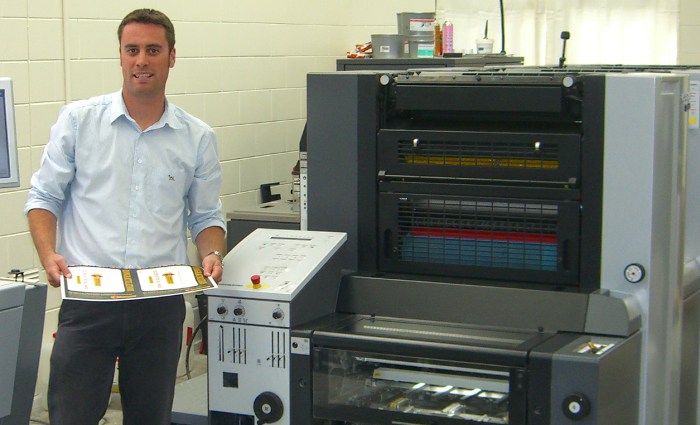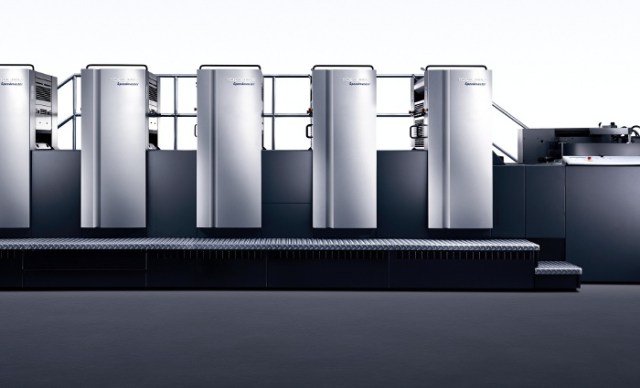
The investment has boosted Apex’s production speed by “at least 50%” and helped it land several new accounts, said managing director Kris Tyrer.
“The GTO did a sterling job but it was just too slow for the market,” he told ProPrint.
“It’s staggering what the SX pumps out. We ran envelopes the other day at 15,000 per hour. It’s a very, very versatile press. We didn’t want to go any bigger to the A2 size. We’ve had such a good experience with Heidelbergs over the years.”
[Related: Heidelberg sells 37 SX units]
The Wellington firm endured a gap of about six weeks between the departure of the GTO and the arrival of the four-colour SX in September. Jobs were either outsourced or done on a two-colour SM 52 during that time, said Tyrer.
One of the big advantages of the SX is that it can use the same plates as the SM, whereas the GTO needed a different-sized plate. The SX also combines well with the 12-staff firm’s main digital machine, a Xerox Color 1000, he said.
“If we’re choc-a-bloc on the digital, which we are a lot, we can make some plates and run it through the SX.” The Heidelberg has even been used for runs as low as 1,000, he added.
“I think the printing industry still has a great future. There is always going to be ink on paper and I believe the cheapest way to do that is offset, depending on the runs of course. We couldn’t operate without digital; in a business our size you must have both,” he said.
[Related: More New Zealand news]
Comment below to have your say on this story.
If you have a news story or tip-off, get in touch at editorial@sprinter.com.au.
Sign up to the Sprinter newsletter

